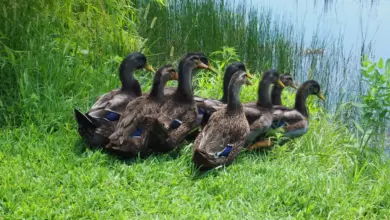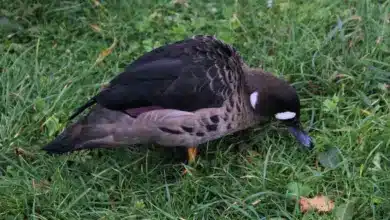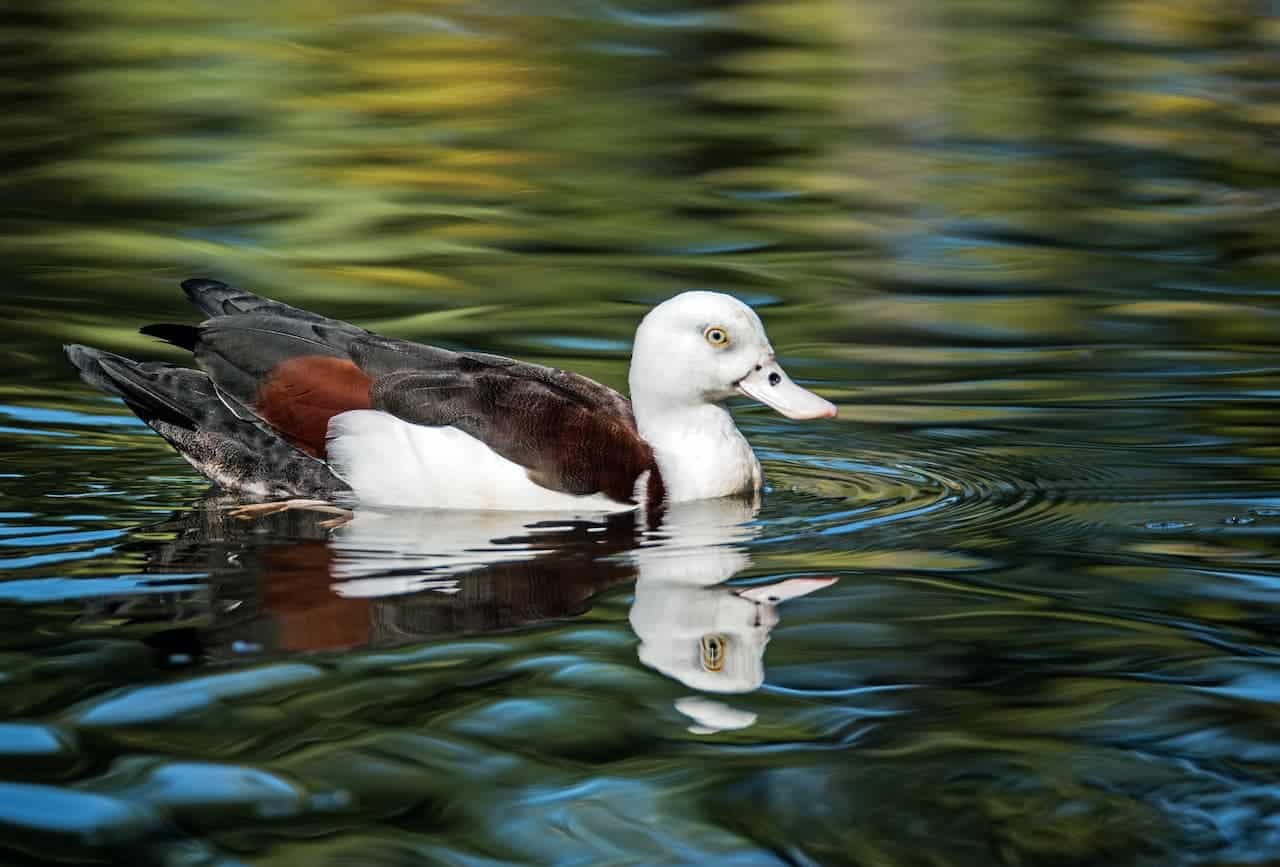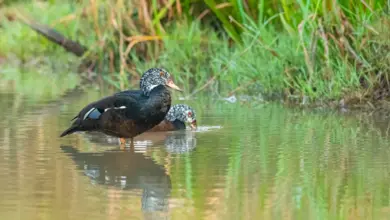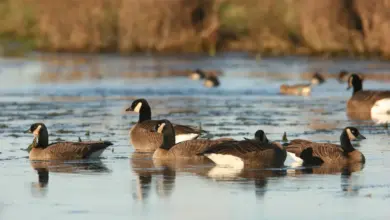The Blue Duck (Hymenolaimus malacorhynchus) is also known as whio (Māori) – so named for the sound of the male’s call. Its common name refers to this duck’s bluish plumage.
This powerful swimmer, but is generally reluctant to fly.
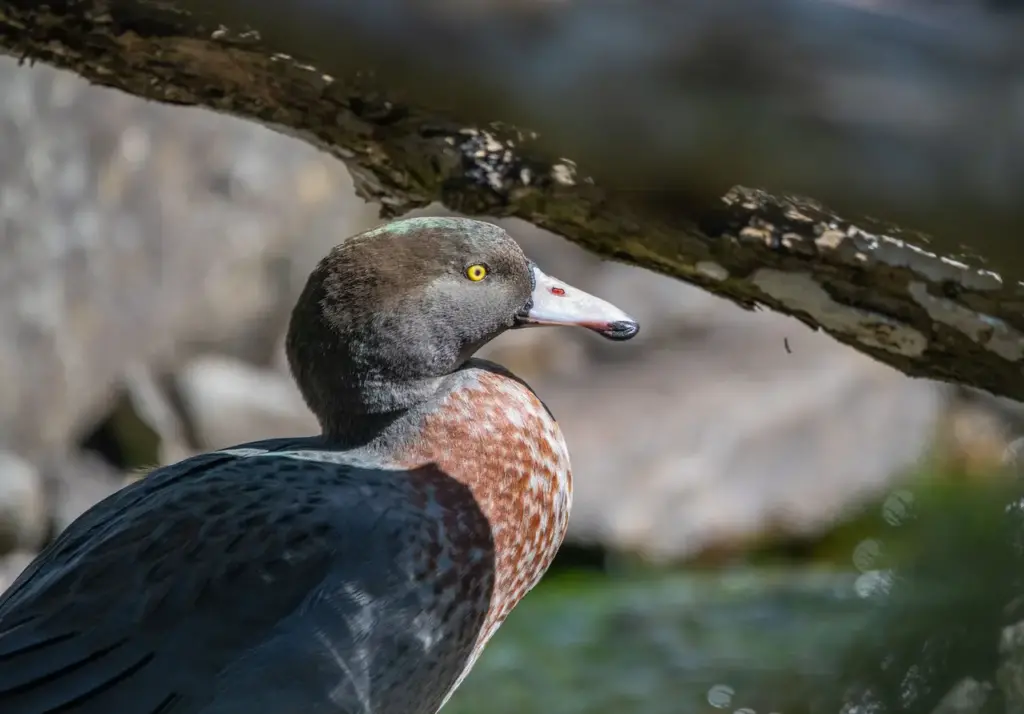
A group of ducks is called a “brace”. The male duck is known as “drake,” the female as “hen,” and a juvenile duck (chick) is referred to as “duckling.”
Distribution / Habitat:
The rare Blue Ducks are endemic to New Zealand, where they have a very localized range. They hold territories on fast flowing mountain rivers.
This species is threatened by predation from introduced mammals, in particular stoats; and habitat destruction.
The New Zealand Department of Conservation is presently implementing recovery programs in preferred habitats, such as the Oparara River area of the West Coast, New Zealand and the Milford Track in Fiordland.
Nesting / Breeding
Blue Ducks typically nest in hollow logs, as well as in small caves and other sheltered spots.
Description:
The Blue Duck measures about 54 cm in length.
The adult plumage is dark slate-grey with a chestnut-flecked chest.
The bill is pinkish-white with fleshy flaps of skin hanging from the sides of its tip. The eyes are pale-colored.
Hatchlings are born with green beaks, but about eight hours after hatching, they develop the final bill color.
Physical Adaptations
Ducks are able to stay afloat in water is because of …
- air sacs in their bodies that increase their buoyancy.
- their feathers trap air in between them, which also helps them to float.
Their feathers are covered with a waterproof substance that keeps them warm and dry.
Their webbed feet allow them to maneuver easily in the water.
Feeding: instead of “teeth,” ducks have serrations (saw-like edges) on their bills that allow them to filter food out of the water.

Call / Vocalization:
The male’s call is described an aspirated whistle, and the female’s as a rattling growl.
Diet / Feeding:
Ducks feed on larvae and pupae usually found under rocks, aquatic animals, plant material, seeds, small fish, snails, and crabs.
Instead of “teeth,” ducks have serrations (saw-like edges) on their bills that allow them to filter food out of the water.
Captive birds are often fed commercially prepared duck food pellets – if there are insufficient natural resources available to sustain them. As they feed on insects, they are very useful in ridding gardens or lawns of harmful bugs

